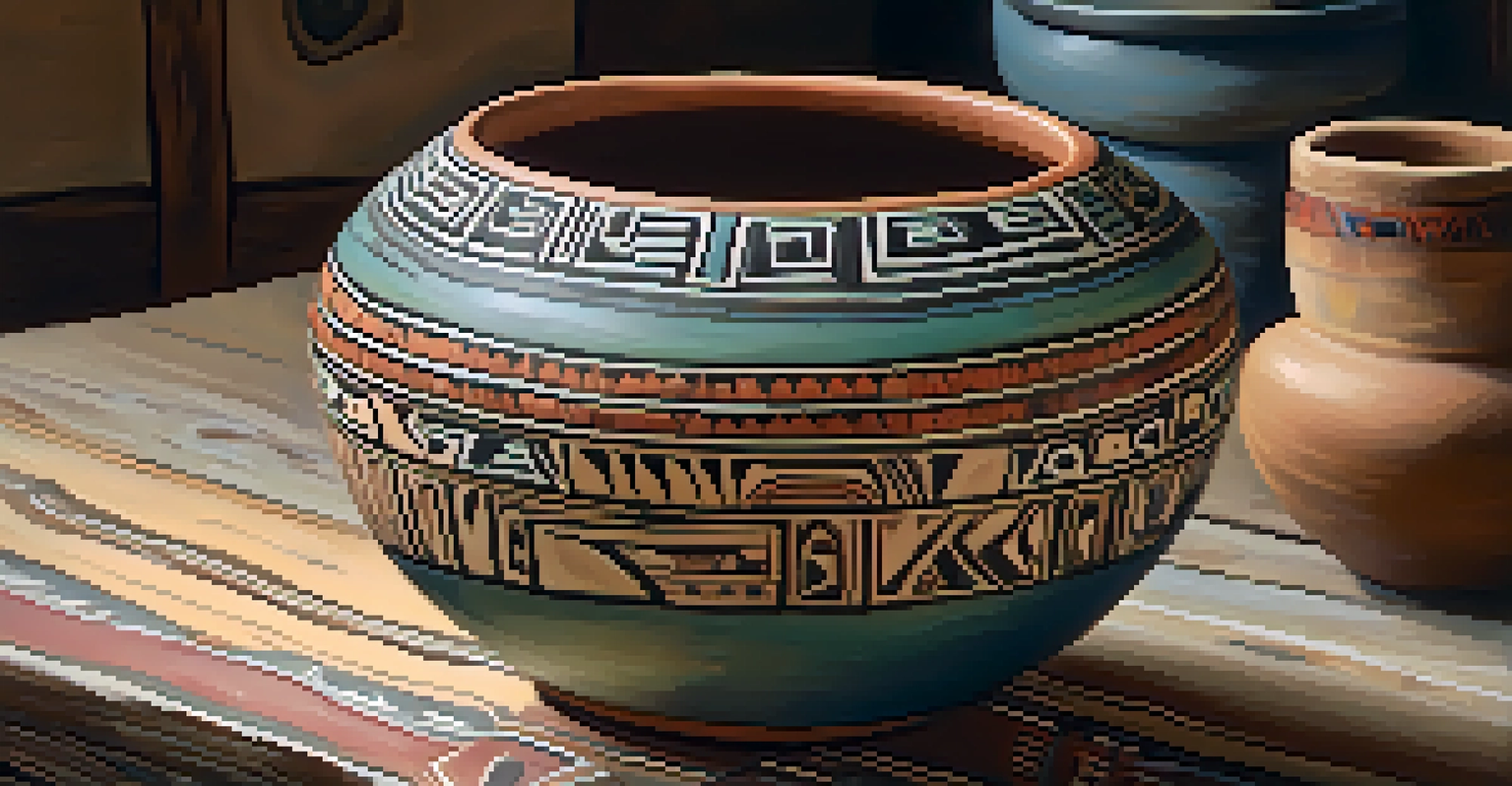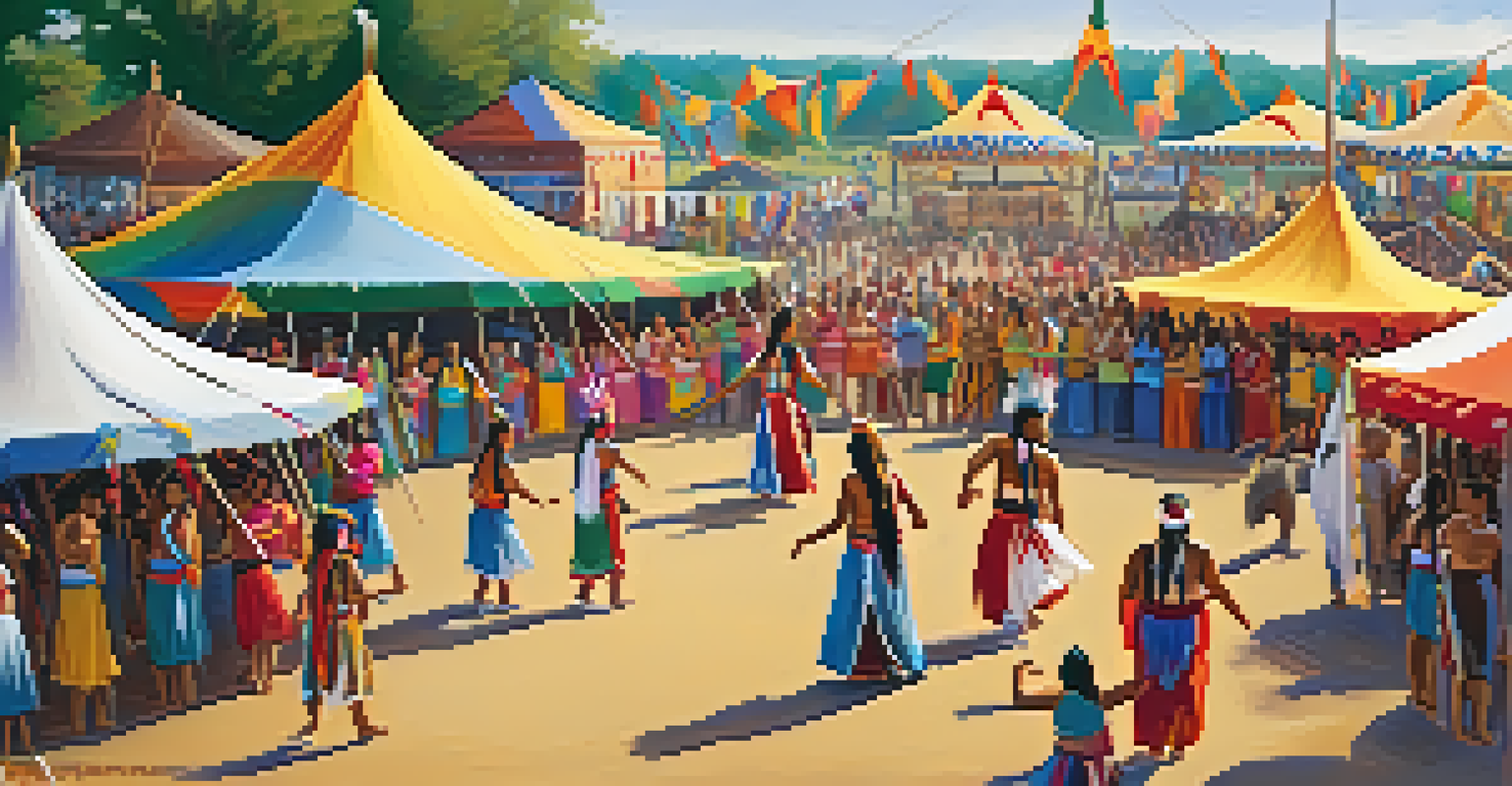The Influence of Native American Culture in Texas

A Historical Overview of Native American Tribes in Texas
Texas has a rich tapestry of Native American history, with tribes such as the Comanche, Apache, and Caddo calling it home. These groups not only thrived in diverse environments but also adapted to the changing landscapes over centuries. Understanding their history provides context for the state’s cultural development and the harmonious relationship these tribes had with the land.
We do not inherit the earth from our ancestors, we borrow it from our children.
The arrival of European settlers in the 16th century marked a significant turning point for Native tribes in Texas. Colonization brought new challenges, including displacement and cultural assimilation attempts. Yet, despite these hardships, many tribes managed to preserve their traditions and languages, showcasing their resilience and determination.
Today, the legacy of these tribes can be seen in various aspects of Texan life, from place names to cultural practices. Recognizing this history is crucial for appreciating the ongoing contributions of Native American culture to Texas.
Cultural Contributions in Art and Craftsmanship
Native American artists in Texas have made remarkable contributions through pottery, beadwork, and weaving. Each piece often tells a story, reflecting the tribe's history and spiritual beliefs. For example, the intricate beadwork of the Plains tribes showcases not only skill but also the vibrant stories and traditions passed down through generations.

Incorporating natural materials, many artisans prioritize sustainability, using resources that have been part of their culture for centuries. This connection to nature not only honors their ancestors but also aligns with modern environmental practices. It’s a beautiful blend of tradition and contemporary values.
Rich Native American History in Texas
Texas's Native American tribes, such as the Comanche and Apache, have a profound history that shapes the state's cultural identity.
Furthermore, art shows how Native American culture continues to evolve while maintaining its roots. Exhibitions and galleries across Texas highlight these works, inviting everyone to appreciate the beauty and significance behind each creation.
Spirituality and Beliefs of Native American Tribes
Spirituality plays a vital role in Native American cultures, with beliefs deeply tied to nature and the universe. Many tribes view the land as sacred, emphasizing the importance of maintaining a harmonious relationship with it. This spiritual connection is often expressed through rituals, songs, and storytelling.
The land is sacred. These words are at the core of our being. They are our ancestors’ words. They tell us how we should live, how we should treat the land, and how we should treat each other.
For instance, the Comanche people have unique ceremonies that celebrate the changing seasons and honor their ancestors. These rituals not only strengthen community bonds but also serve as a way to pass down important cultural teachings to younger generations. This intergenerational knowledge transfer is crucial for cultural preservation.
Modern Texans may find parallels between these beliefs and contemporary environmental movements. As more people seek to reconnect with nature, the wisdom of Native American spirituality offers valuable insights into sustainable living and respect for the Earth.
Language Preservation and Its Importance
Language is a vital aspect of any culture, and for Native American tribes in Texas, preserving their languages is essential for cultural identity. Many tribes have initiated programs to teach their languages to younger members, ensuring that traditions and stories are not lost. For example, the revitalization efforts among the Caddo Nation demonstrate a commitment to keeping their language alive.
The challenge of language preservation is compounded by historical suppression, which makes these efforts even more significant. By reclaiming their languages, tribes can strengthen their community ties and foster a deeper understanding of their heritage. This not only benefits the tribes but also enriches the cultural diversity of Texas as a whole.
Cultural Heritage Through Art
Native American artisans in Texas create meaningful artworks that reflect their history and beliefs, blending traditional craftsmanship with modern values.
As language enthusiasts and cultural advocates work together, the hope is to create a future where Native American languages flourish alongside English and Spanish. This collaborative spirit highlights the importance of inclusivity and respect for all cultural narratives in Texas.
Influence of Native American Cuisine in Texas
Native American cuisine has significantly influenced Texan food culture, blending traditional ingredients with regional flavors. Staples like corn, beans, and squash can be traced back to indigenous practices, and many Tex-Mex dishes reflect this culinary heritage. Dishes such as tamales and tortillas owe their origins to ancient techniques passed down through generations.
Moreover, the use of native ingredients like prickly pear and mesquite flour is gaining popularity among chefs, as they seek to incorporate local flavors into modern dishes. This not only enhances the gastronomic experience but also honors the deep-rooted connection that Native Americans have with the land.
As culinary tourism grows, more people are eager to explore the rich flavors of Native American cuisine. This curiosity fosters greater appreciation for the cultural significance behind each dish, creating a more inclusive food culture in Texas.
Native American Festivals and Their Significance
Festivals celebrating Native American culture in Texas provide a platform for showcasing traditions, music, and dance. Events like the Texas Folklife Festival and the Comanche Nation's annual gathering draw people from all walks of life, emphasizing cultural exchange. These festivals not only celebrate heritage but also foster community spirit and understanding.
Participating in these events allows attendees to experience the vibrancy of Native American life firsthand. From traditional drumming to storytelling sessions, each activity offers a glimpse into the rich cultural tapestry. This immersive experience helps break down barriers and promotes respect for diverse cultures.
Advocacy for Native Rights Today
Contemporary advocacy efforts in Texas focus on amplifying Native American voices and addressing issues like land rights and cultural preservation.
Moreover, these festivals often include educational workshops, where individuals can learn about various aspects of Native American life, from crafts to history. By engaging with these communities, Texans can build bridges of understanding and appreciation, enriching their own cultural experiences.
The Role of Native American Advocacy in Texas Today
In contemporary Texas, Native American advocacy plays a crucial role in addressing issues such as land rights, education, and cultural preservation. Various organizations work tirelessly to ensure that the voices of Native communities are heard, advocating for policies that respect their rights and heritage. This advocacy is particularly important in a state where the history of indigenous peoples is often overlooked.
These efforts are vital not only for the tribes themselves but also for fostering awareness among the broader Texan community. By sharing their stories and challenges, Native Americans are helping to shape a more inclusive narrative about Texas's history. This ongoing dialogue is essential for healing and reconciliation.

As more Texans become aware of these issues, there's a growing movement toward supporting Native American rights and initiatives. This shift reflects a collective desire to honor the past while building a future that respects and celebrates the diverse cultures that make Texas unique.